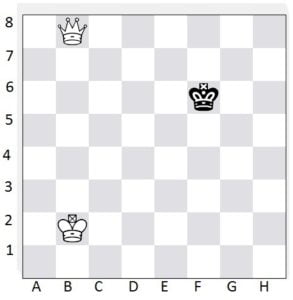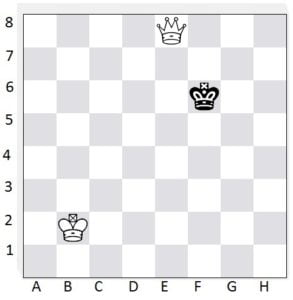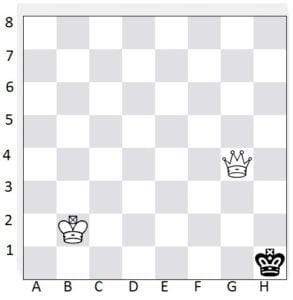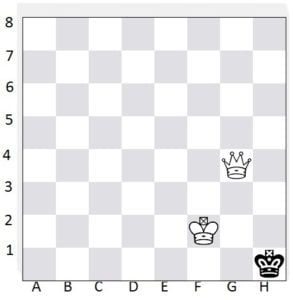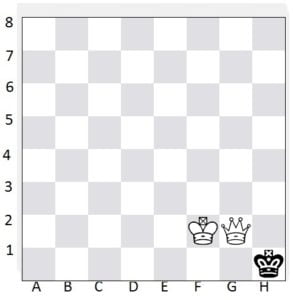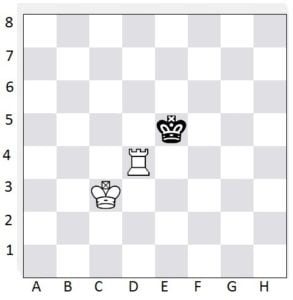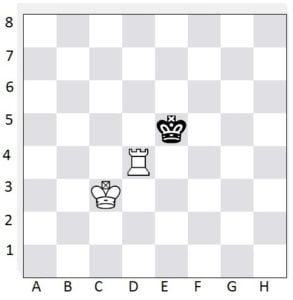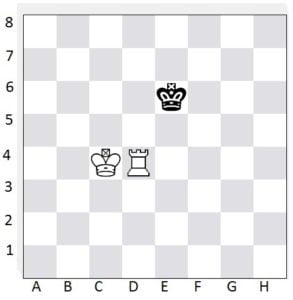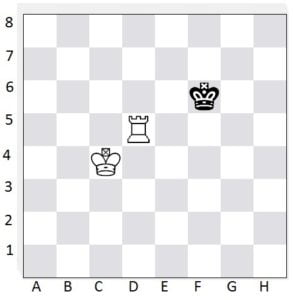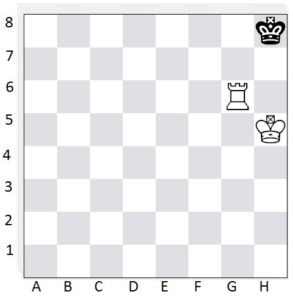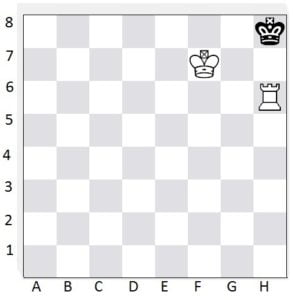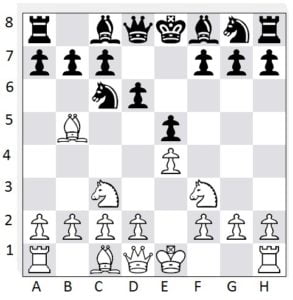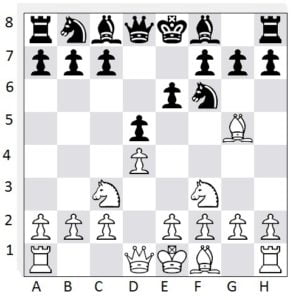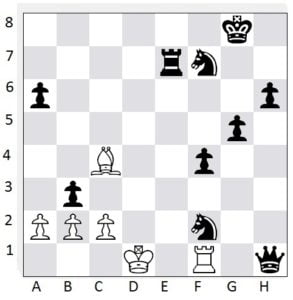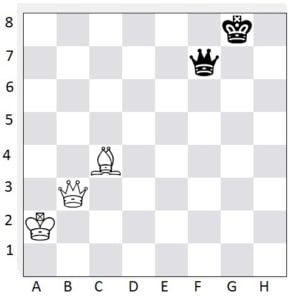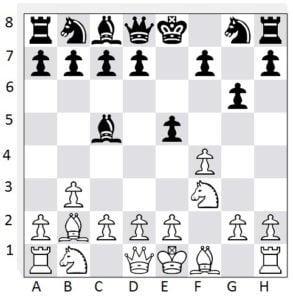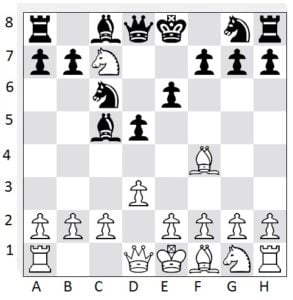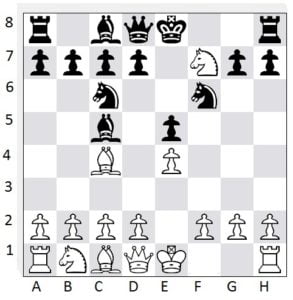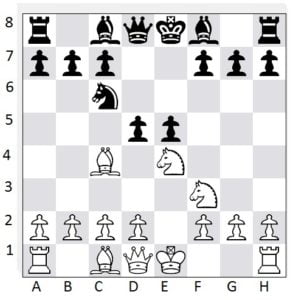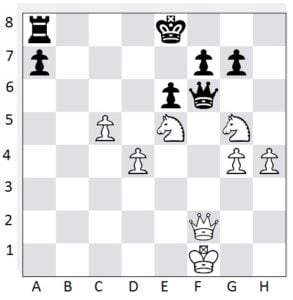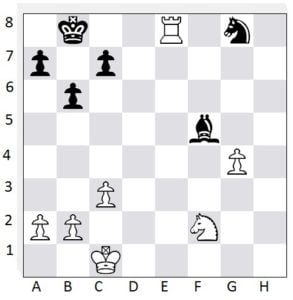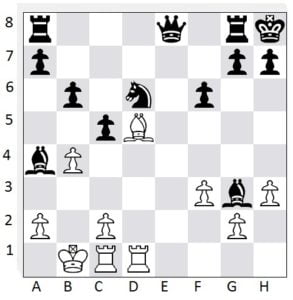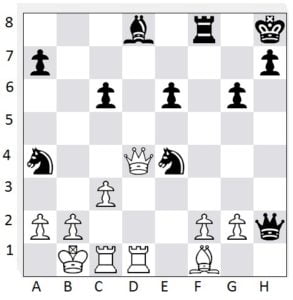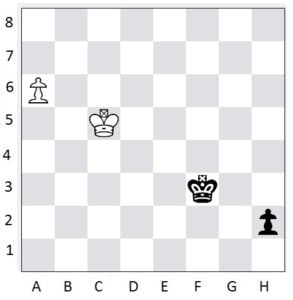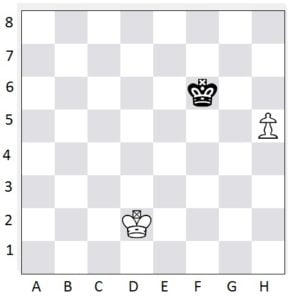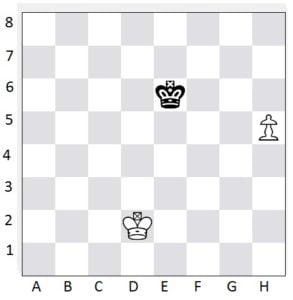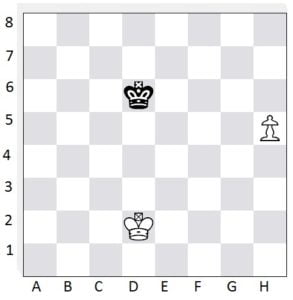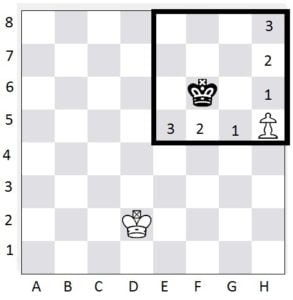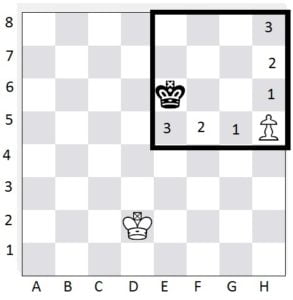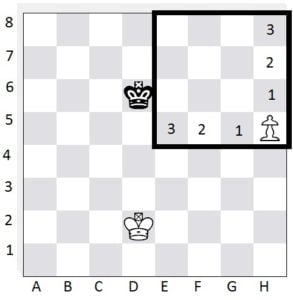In the last blog, I covered mating with a King and Rook. The idea was to box in the opposing King into a smaller and smaller area of squares until in the end you use your king to take away his final square and checkmate with the Rook.
We’re going to use a similar idea to make with a King and Queen. Some find this easier (since the queen can move in more directions than a rook and can therefore making the King’s remaining squares smaller faster… but some people may have trouble with it (there was a game in the Under 900 section at the World Open where the game ended in a draw because the kid with a King and Queen couldn’t figure out what to do, and ended up stalemating the opposing King).
Since I don’t want you to accidentally stalemate your opponent, let’s take a look at what we need to do… First, I’ll set up a random starting position:
We’ll say that white just queened it’s pawn and then black moved to F6 from E5 after white Checked with the new queen. It’s now White’s move. Remember, white wants to take away as many of black’s possible squares as quickly as possible. There’s no need to endlessly put black in check (if you do 50 checks in a row, it’ll be a draw anyway). We can’t just keep going back and forth either (as 3-move repetition is a draw), and we have to be careful that in the end, we don’t cut off black’s available squares until just the right time (we don’t want to stalemate black like the unfortunate player at the World Open).
White’s goal here is to corral black into the corner or edge of the board. In the above position, black is already on the F-file… so let’s keep him confined to F-H by moving the Queen to block the E-file:
Depending on where black goes, we’ll just cut his squares off more and more. So if he did Kg7, we’d go Qe6 making black have only 3 squares left to go to. if he goes to g6 or g5, we’ll go to f8 to take another file away. if he goes to f5, we’ll do Qe7 to make the space smaller.
Eventually, we’ll want to bring our king into the game, but not until we can’t take away more space with the queen.
Here’s a position, while playing against my chess computer where I finally have to start bringing my king over:
Do you see WHY I now need to bring my King over? If I move Qg3, I take away the last of black’s squares but without checking him, so it’s a stalemate/draw. I don’t want a draw, I want a win. And I can’t go Qh4+, Qh3+, or any other Queen move for that matter, because it will allow black to get his King out of the little cage I’ve placed him in. And I don’t want that. So now, with black having only h2 to go to, it’s time to start walking my King over, forcing Black to go Kh2, Kh1, Kh2, Kh1 back and forth until my King gets to his area..
and now that the black king is wedged in place, we can mate with Qg2#:
Have a topic you want me to cover or a question you want answered? e-mail me at [email protected]


